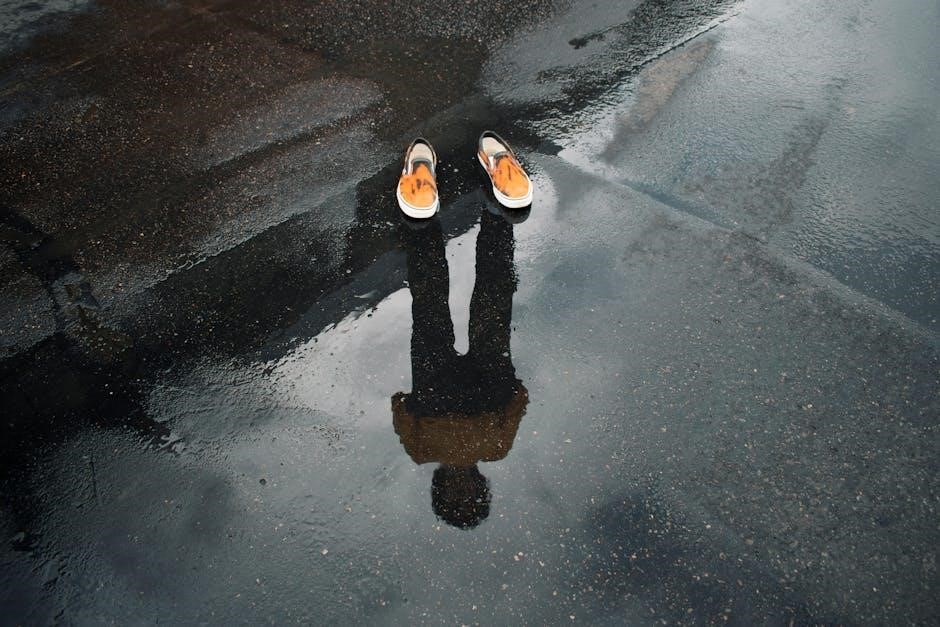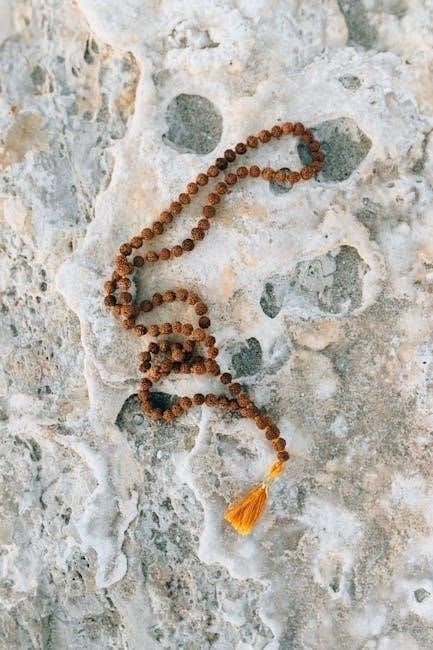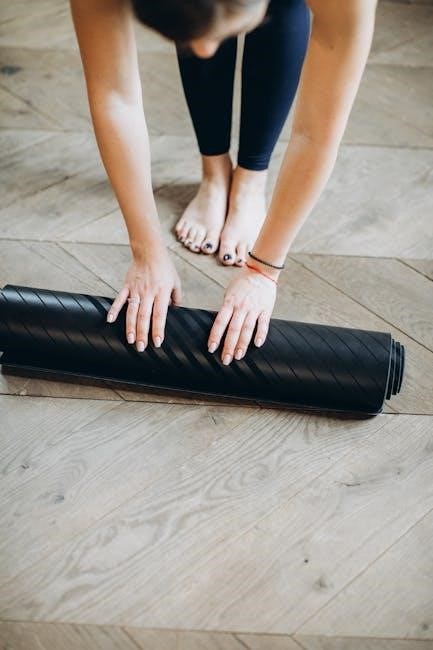
A presser foot is an essential sewing machine attachment that stabilizes fabric, ensuring even stitching and tension. It guides fabric smoothly, preventing slippage and bunching, and is crucial for consistent results.
1.1 What is a Presser Foot?
A presser foot is a sewing machine attachment that holds fabric in place during stitching. It comes in various types, such as standard, zipper, and walking feet, each designed for specific tasks. Attachable to the machine’s shank, it stabilizes fabric, ensuring even stitch formation and tension. Presser feet are typically made of metal or plastic and are essential for preventing slippage and bunching. They play a crucial role in achieving professional-grade results in sewing projects, from basic repairs to intricate quilting designs.
1.2 Importance of Presser Feet in Sewing
Presser feet are indispensable in sewing, as they ensure fabric stability and consistent stitch quality. By preventing slippage and bunching, they help maintain even tension, which is vital for professional results. Different presser feet cater to specific techniques, such as quilting, zippers, or heavy-duty sewing, making them essential for versatility. Their role in enhancing precision and efficiency makes them a must-have tool for sewists, whether working on simple repairs or complex projects.

Types of Presser Feet
Presser feet come in various types, including standard, specialized, and decorative, each designed for specific sewing tasks. They vary in material, size, and functionality to suit different projects.
2.1 Standard Presser Foot
The standard presser foot is the most commonly used attachment, designed for straight stitching. It features a flat, solid design that ensures even fabric feeding and consistent stitch formation. Suitable for a wide range of fabrics, from lightweight cotton to heavier materials, it is a versatile tool for everyday sewing projects. The standard foot is often included with sewing machines and serves as a reliable choice for basic tasks like piecing, seaming, and repairs. Its simplicity makes it ideal for beginners and experienced sewists alike.
2.2 Specialized Presser Feet
Specialized presser feet are designed for specific sewing tasks, offering enhanced precision and control. The zipper foot is ideal for sewing zippers and thick seams, while the blind hem foot is perfect for creating nearly invisible hems. Other options include the walking foot for heavy fabrics, Teflon feet for slippery materials, and gathering feet for creating ruffles. Each specialized foot is tailored to a particular technique, ensuring optimal results for specific projects and fabrics, making them indispensable for sewists seeking professional-grade outcomes.
Choosing the Right Presser Foot
Selecting the right presser foot depends on your project type, fabric thickness, and specific sewing tasks. Match your needs to the foot’s design for optimal results.
3.1 Factors to Consider
When choosing a presser foot, consider fabric type, machine compatibility, and project requirements. Ensure the foot matches your machine’s shank type and aligns with the stitch settings. For delicate fabrics, a lightweight foot is ideal, while heavy-duty options suit thick materials. Specialized feet, like zigzag or walking feet, enhance performance for specific tasks. Always check compatibility with your machine model to avoid damage or poor stitching. Proper fit ensures smooth operation and professional results.
3.2 Popular Options for Common Projects
For general sewing, the standard presser foot is ideal for straight stitching. The zigzag foot is perfect for decorative stitches and stretch fabrics. Walking feet excel at handling thick materials like quilts, while blind hem feet are great for invisible hems. Specialized feet like ruffler or gathering feet are excellent for creating embellishments or draperies. Choosing the right foot for your project ensures better fabric control and professional-looking results, making sewing easier and more efficient.
Attaching and Using a Presser Foot
Attaching the presser foot correctly is crucial for smooth fabric movement and consistent stitching. Ensure it is securely locked to prevent errors and achieve professional results.
4.1 Step-by-Step Guide
- Turn off your sewing machine and ensure the area is clear.
- Locate the presser foot ankle and lift the lever to detach the current foot.
- Align the new presser foot with the machine’s attachment point;
- Lower the lever to secure the foot firmly in place.
- Test the foot by gently pulling fabric through to ensure smooth movement.
- Adjust the fabric guide or tension as needed for optimal stitching.
Following these steps ensures proper attachment and alignment, guaranteeing precise stitching and even fabric flow.
4.2 Safety Tips
- Always turn off your sewing machine before attaching or detaching a presser foot to avoid accidental start-ups.
- Handle sharp or small parts with care to prevent injuries.
- Use the correct tools provided with your machine to avoid damaging the foot or the machine.
- Keep loose clothing or long hair tied back to avoid entanglement with moving parts.
- Ensure the presser foot is securely attached before sewing to prevent fabric slippage or uneven stitching.
Following these safety tips ensures a smooth and incident-free sewing experience while working with presser feet.

Maintenance and Troubleshooting
Regularly clean presser feet to remove debris and ensure smooth operation. Lightly oil moving parts and inspect for damage. Proper storage prevents rust and extends longevity.
5.1 Cleaning and Care
Regular cleaning and proper care are essential to maintain presser feet functionality. Use a soft brush or cloth to remove thread, lint, and debris. For stubborn residue, lightly dampen the cloth with water, but avoid harsh chemicals. Dry the presser foot thoroughly to prevent rust. Store presser feet in a protective case or pouch to avoid scratches and damage. Clean after each project to ensure optimal performance and extend the lifespan of your presser feet.
5.2 Common Issues and Solutions
Common issues with presser feet include improper alignment, fabric bunching, or damage from debris. To address these, ensure the foot is securely attached and aligned with the needle. For fabric bunching, adjust the tension or use a walking foot. Regularly clean debris to prevent jams. If damaged, replace the presser foot promptly. Always test settings on scrap fabric before sewing. Avoid forcing the foot, as this can cause machine damage. Proper maintenance and troubleshooting ensure smooth sewing operations and extend the life of your presser feet.

The Evolution of Presser Feet
Presser feet have evolved from basic mechanical designs to advanced, specialized attachments, driven by technological innovations and sewing machine advancements, improving functionality and efficiency over time.
6.1 From Traditional to Modern Designs
Presser feet have transitioned from simple, universal designs to specialized, task-specific attachments. Early versions were often metal and basic, while modern designs incorporate plastic, ergonomic features, and precision engineering. Advances in materials and technology have led to a wide range of presser feet tailored for specific sewing tasks, such as quilting, zipper insertion, or decorative stitching. This evolution reflects the growing diversity of sewing projects and the need for increased versatility and efficiency in sewing machine accessories.
6.2 Impact of Technology
Technology has significantly transformed presser feet, enhancing their functionality and adaptability. Modern designs now feature automatic fabric detection, adjustable pressure, and ergonomic improvements. Smart presser feet integrate sensors to optimize stitching and fabric guidance. Computerized sewing machines often include advanced presser feet tailored for specific tasks, such as embroidery or edge joining. These innovations improve precision, reduce effort, and expand creative possibilities for sewists, making sewing more efficient and enjoyable across various projects and techniques.

Tips and Tricks
Experiment with different presser feet to find what works best for your fabric. Regularly clean and maintain your presser foot for optimal performance. Always test stitches on scrap fabric before sewing your final project to ensure proper tension and alignment. This helps achieve professional-looking results and minimizes errors. Keep a variety of presser feet on hand to tackle diverse sewing tasks efficiently and effectively.
7.1 Expert Advice
Experts recommend experimenting with different presser feet to optimize results for various fabrics and projects. Regularly cleaning and maintaining your presser foot ensures smooth operation and prevents damage. Always test stitches on scrap fabric to ensure proper tension and alignment before starting your project. Keeping a variety of presser feet on hand allows you to tackle diverse sewing tasks efficiently. Adjusting the presser foot tension according to fabric thickness can significantly improve stitch quality. Investing in high-quality presser feet and accessories is worth the cost for professional-looking results.
7.2 Maximizing Sewing Efficiency
Maximizing sewing efficiency begins with selecting the right presser foot for your project. Organize your presser feet in a dedicated storage case to save time. Regularly clean and maintain your presser feet to ensure smooth operation. Use accessories like seam guides or edge joiners to enhance precision. Pre-winding bobbins and having extra needles on hand can also streamline your workflow. Always refer to your machine’s manual for optimized settings and presser foot compatibility. These small steps can significantly improve your sewing speed and accuracy, making every project more enjoyable and professional.